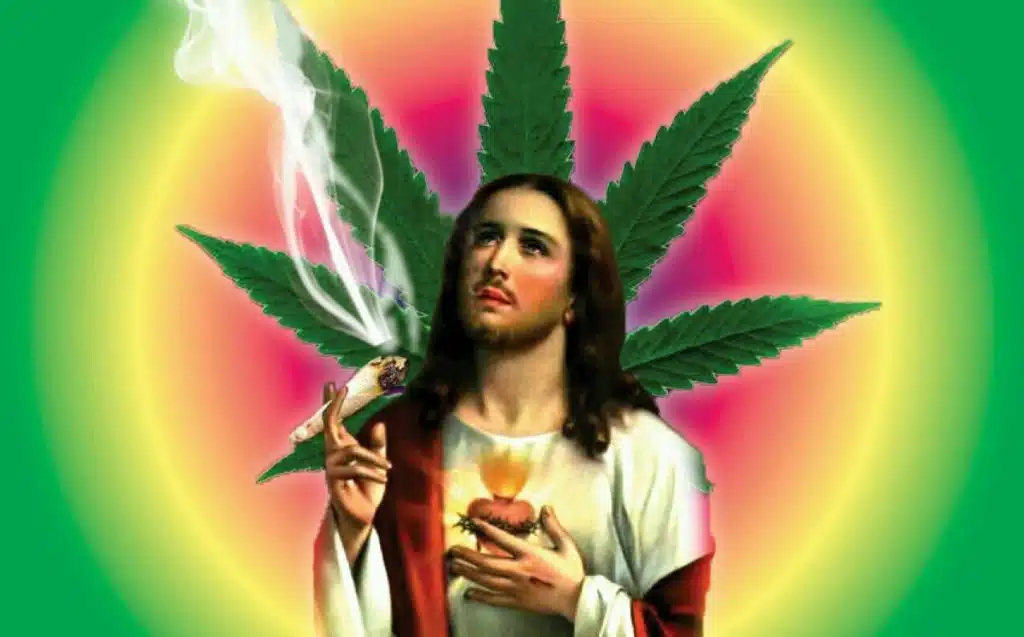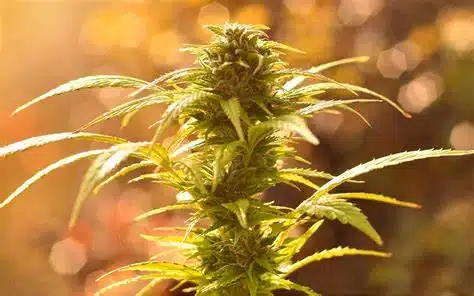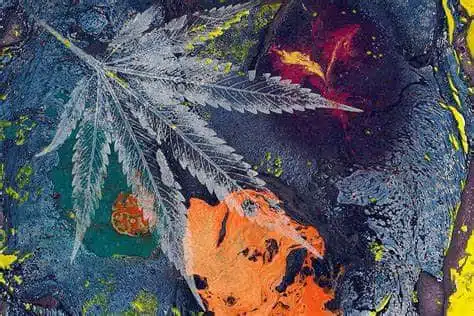The Interesting History Of Weed
Hey there, fellow cannabis enthusiasts! Today, we’re going to dive into a fascinating topic that has shaped the perception of weed over the years: the stigmatization of cannabis. From its history to the present day, we’ll explore the reasons behind the negative portrayal of marijuana and how it has affected public opinion. So, grab your favorite strain, sit back, and let’s embark on this enlightening journey together!
The History of Weed Stigmatization
Throughout the history of weed, cannabis has been used for various purposes, including medicinal, spiritual, and recreational. However, the stigmatization of weed began to take root in the early 20th century. Influenced by political and social factors, negative narratives surrounding cannabis started to emerge. Let’s take a closer look at some of the key subtopics related to this intriguing phenomenon.
1. The Role of Politics in Cannabis Stigmatization
Politics has played a significant role in shaping the perception of cannabis. In the 1930s, the U.S. government launched a campaign known as “Reefer Madness,” which aimed to demonize marijuana through exaggerated claims of its dangers. This propaganda fueled public fear and led to the passing of strict anti-cannabis laws.
2. Racial Bias and Cannabis Prohibition
Another unfortunate aspect of cannabis stigmatization is its association with racial bias. During the early 1900s, anti-immigrant sentiments were prevalent, and cannabis became linked to Mexican immigrants. This racial prejudice contributed to the criminalization of marijuana, further perpetuating negative stereotypes.
3. The Influence of Big Pharma and the Paper Industry
The rise of the pharmaceutical and paper industries also played a role in the stigmatization of cannabis. Pharmaceutical companies saw marijuana as a potential threat to their profits, while the paper industry viewed hemp as competition. These powerful industries lobbied against cannabis, influencing public opinion and policy decisions.
4. The War on Drugs and its Impact
The “War on Drugs” declared by President Richard Nixon in the 1970s intensified the stigmatization of cannabis. This aggressive campaign focused on eradicating drug use, including marijuana, through strict law enforcement. The criminalization of cannabis led to mass incarcerations and disproportionately affected marginalized communities.
5. Media Portrayal and Misinformation
The media has played a significant role in perpetuating negative stereotypes about cannabis. Sensationalized stories and misinformation have contributed to the stigmatization of weed. Movies, TV shows, and news outlets often portrayed marijuana users as lazy, unmotivated, and dangerous, further fueling public misconceptions.
The Changing Perception of Cannabis
Despite the long-standing stigmatization, the perception of cannabis has been gradually shifting in recent years. As more research emerges and public opinion evolves, people are beginning to recognize the potential health benefits and positive aspects of marijuana use. Let’s explore some of the subtopics related to this changing perception.
1. The Rise of Medicinal Cannabis
One of the most significant factors in changing the perception of cannabis is the growing acceptance of its medicinal properties. Scientific studies have shown that cannabis can be effective in managing various health conditions, such as chronic pain, epilepsy, and anxiety. This newfound understanding has led to the legalization of medical marijuana in many regions.
2. Cannabis as a Safer Alternative
As the negative stigma surrounding cannabis dissipates, people are starting to view it as a safer alternative to other substances. Compared to alcohol or opioids, marijuana is considered less addictive and has a lower risk of overdose. This realization has prompted discussions about harm reduction and the potential benefits of regulated cannabis use.
3. The Economic Potential of Legalization
Another factor driving the changing perception of cannabis is its economic potential. With the legalization of recreational marijuana in several states and countries, the cannabis industry has experienced significant growth. This has led to job creation, tax revenue generation, and economic stimulation, challenging the notion that marijuana is solely a societal burden.
4. Shifting Cultural Attitudes
Cultural attitudes towards cannabis have also evolved over time. As more individuals share their positive experiences with marijuana, the social stigma surrounding its use is gradually eroding. Celebrities, athletes, and public figures openly discussing their cannabis consumption have helped normalize the plant and challenge outdated stereotypes.
5. Education and Awareness
Lastly, education and awareness campaigns have played a crucial role in changing the perception of cannabis. Organizations and advocates have worked tirelessly to provide accurate information about the potential benefits and risks associated with marijuana use. By dispelling myths and promoting evidence-based knowledge, they have contributed to a more informed and open-minded society.
The Early Days: Cannabis as a Medicinal Plant
To truly understand the bad history of weed, we must first acknowledge its ancient roots as a medicinal plant. Cannabis has been used for thousands of years in various cultures around the world to treat a wide range of ailments. Ancient civilizations recognized its therapeutic properties and incorporated it into their medical practices. However, as time went on, societal attitudes towards cannabis began to shift.
The Rise of Cannabis Prohibition
The Temperance Movement and the Prohibition Era
The early 20th century history of weed marked a turning point in the perception of cannabis. The Temperance Movement, which aimed to eradicate alcohol consumption, gained momentum and influenced the public’s perception of mind-altering substances. Cannabis, along with alcohol, became a target of prohibitionists who believed that these substances posed a threat to society.
The Role of Racism and Xenophobia
Racism and xenophobia played a significant role in the demonization of cannabis. During the early 1900s, anti-immigrant sentiments were prevalent, particularly towards Mexican immigrants. Cannabis, known as “marihuana” at the time, was associated with Mexican culture and was portrayed as a dangerous substance that would corrupt American society. This racial bias fueled the push for cannabis prohibition.
The Influence of Powerful Industries
The rise of powerful industries, such as the pharmaceutical and paper industries, also contributed to the bad history of weed. Pharmaceutical companies saw cannabis as a potential threat to their profits, as it offered alternative treatments for various conditions. The paper industry, which relied heavily on timber, viewed hemp as competition due to its versatility as a fiber source. These industries lobbied against cannabis, spreading misinformation and influencing public opinion.
The Propaganda Machine: Reefer Madness and Beyond
Reefer Madness: A Campaign of Fear
One of the most notorious examples of cannabis propaganda is the film “Reefer Madness.” Released in 1936, this exploitation film depicted marijuana users as deranged, violent criminals. It exaggerated the effects of cannabis, portraying it as a gateway drug that would lead to insanity and moral degradation. “Reefer Madness” became a powerful tool in spreading fear and misinformation about cannabis.
Media Sensationalism and Misinformation
The media has played a significant role in perpetuating negative stereotypes about cannabis. Sensationalized stories and biased reporting have contributed to the demonization of weed. News outlets often focus on the negative aspects of cannabis use, highlighting isolated incidents and ignoring the potential benefits. This skewed portrayal has shaped public opinion and reinforced the stigma surrounding marijuana.
The War on Drugs: A Failed Approach
Nixon’s War on Drugs
In the 1970s, President Richard Nixon declared a “War on Drugs” as part of his administration’s efforts to combat drug abuse. This aggressive campaign targeted all illicit substances, including cannabis. The War on Drugs led to strict law enforcement, harsh penalties, and mass incarcerations. However, despite decades of prohibition and billions of dollars spent, the War on Drugs has proven to be a failure, with little impact on drug use rates.
Disproportionate Impact on Marginalized Communities
One of the most devastating consequences of the War on Drugs is its disproportionate impact on marginalized communities. Cannabis-related offenses have led to the over-policing and over-incarceration of individuals, particularly people of color. This systemic injustice has perpetuated social inequality and further marginalized already vulnerable communities.
The Changing Tide: Challenging the Stigma
The Rise of Medical Cannabis
In the history of weed and recent years, the perception of cannabis has begun to shift. The recognition of its medicinal properties has played a significant role in challenging the stigma. Scientific research has shown that cannabis can be effective in treating various conditions, such as chronic pain, epilepsy, and nausea. This newfound understanding has led to the legalization of medical marijuana in many regions.
The Push for Legalization
The push for cannabis legalization has gained momentum worldwide. Advocates argue that regulation and taxation can help mitigate the negative consequences associated with prohibition. Legalization has the potential to generate tax revenue, create jobs, and redirect law enforcement resources towards more pressing issues. As a result, several countries and states have embraced a more progressive approach to cannabis.
Education and Awareness
Education and awareness campaigns have played a crucial role in challenging the bad history of weed. Organizations and advocates have worked tirelessly to provide accurate information about cannabis, debunking myths and misconceptions. By promoting evidence-based knowledge, these efforts have helped reshape public opinion and foster a more informed and nuanced understanding of cannabis.
The bad history of weed is a complex tapestry woven with racism, political agendas, and misinformation. From its ancient roots as a medicinal plant to its demonization during the Prohibition era, cannabis has endured a long and tumultuous journey. However, as society becomes more educated and enlightened, the stigma surrounding cannabis is gradually eroding. The rise of medical cannabis, the push for legalization, and the efforts of advocates have paved the way for a more balanced and evidence-based approach to cannabis. It is our collective responsibility to challenge the misconceptions, promote education, and advocate for sensible drug policies that prioritize harm reduction and social justice.
And remember, if you’re looking for a reliable online dispensary to explore the world of cannabis, be sure to check out West Coast Releaf Online Dispensary. With their wide range of products, including concentrates, edibles, vapes, and more, they are committed to providing high-quality cannabis experiences. Happy exploring and stay informed!
Cultural and Religious Taboos
Cultural and religious taboos have played a significant role in shaping the negative perception of weed. In some societies, cannabis was associated with rituals and practices that were deemed unacceptable or threatening by dominant religious or cultural groups. These associations led to the stigmatization of cannabis and its users.
Racial Prejudice and Xenophobia
Racial prejudice and xenophobia have also contributed to the poor reputation of weed. During the early 20th century, anti-immigrant sentiments were prevalent, particularly towards Mexican immigrants. Cannabis, known as “marihuana” at the time, was associated with Mexican culture and was portrayed as a dangerous substance that would corrupt American society. This racial bias fueled the push for cannabis prohibition.
Political and Economic Factors
Political Agendas and Moral Panic
Political agendas and moral panic have played a significant role in shaping the negative perception of cannabis. In the early 20th century, political campaigns and media sensationalism fueled fears about the potential dangers of cannabis. Politicians capitalized on these fears to advance their own agendas, leading to the criminalization of cannabis in many countries.
Economic Interests and Lobbying
The influence of economic interests cannot be overlooked when examining the poor reputation of weed. Industries such as pharmaceuticals, textiles, and paper saw cannabis as competition and lobbied against its use. Pharmaceutical companies, in particular, viewed cannabis as a threat to their profits, as it offered alternative treatments for various conditions. These economic interests influenced public opinion and policy decisions.
Scientific Misconceptions
Early Scientific Misunderstandings
Scientific misunderstandings and limited research have contributed to the poor reputation of weed. In the early 20th century, scientific knowledge about cannabis was limited, and misconceptions about its effects and potential harms prevailed. These misconceptions were often based on biased studies and anecdotal evidence, leading to a skewed understanding of cannabis.
The Gateway Drug Theory
The “gateway drug” theory, which suggests that cannabis use leads to the use of harder drugs, has been influential in shaping negative perceptions of weed. This theory gained popularity in the 1970s and 1980s, despite limited empirical evidence to support it. The gateway drug theory has since been debunked by numerous studies, but its impact on public opinion lingers.
Media Portrayal and Cultural Influences
Media Sensationalism and Stereotypes
Media sensationalism and stereotypes have perpetuated the poor reputation of weed. Movies, TV shows, and news outlets often portrayed marijuana users as lazy, unmotivated, and dangerous. These portrayals reinforced negative stereotypes and contributed to the stigmatization of cannabis and its users.
Cultural Shifts and Counterculture Movements
The history of weed and cultural shifts and counterculture movements have also influenced the perception of weed. In the 1960s and 1970s, cannabis became associated with the counterculture movement, which challenged societal norms and advocated for social change. This association with rebellion and nonconformity further fueled negative perceptions of cannabis among conservative segments of society.
Conclusion
And there you have it, a comprehensive exploration of why weed was stigmatized and how the perception of cannabis is gradually changing. From political agendas to racial biases, various factors have contributed to the negative portrayal of marijuana. However, as society becomes more educated and enlightened, we are witnessing a shift towards acceptance and recognition of the potential health benefits of cannabis. So, let’s continue to challenge stereotypes, promote responsible use, and embrace the positive aspects of this remarkable plant.
Remember, if you’re looking for a reliable online dispensary to explore the world of cannabis, be sure to check out West Coast Releaf Online Dispensary. They offer a wide range of products, including concentrates, edibles, vapes, and more. Happy exploring and stay lifted! If you are interested in buying weed online and THC products, check out West Coast Releaf online weed dispensary and shop for your weed online and cannabis products at westcoastreleaf.co!













